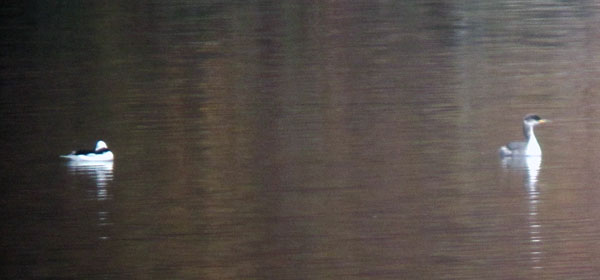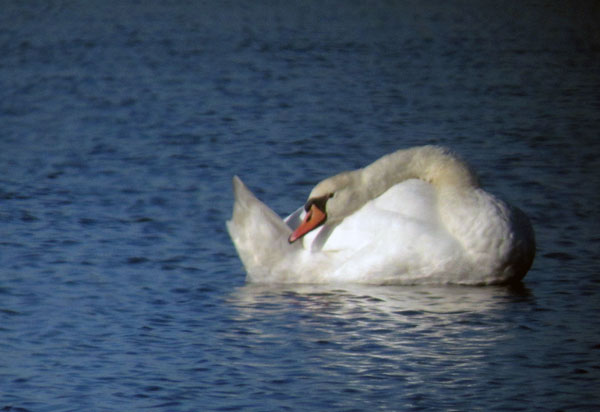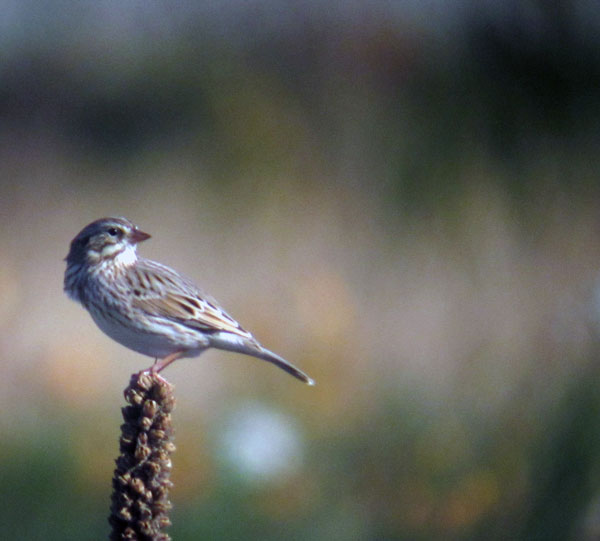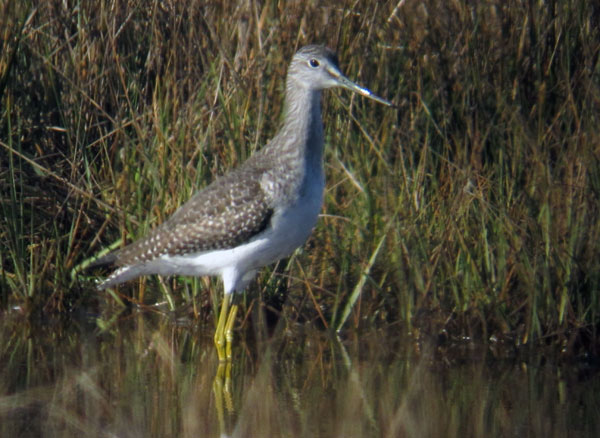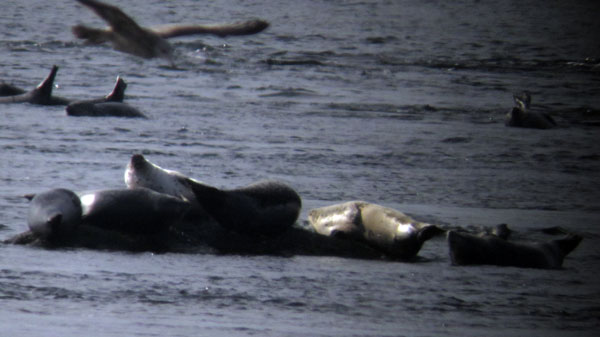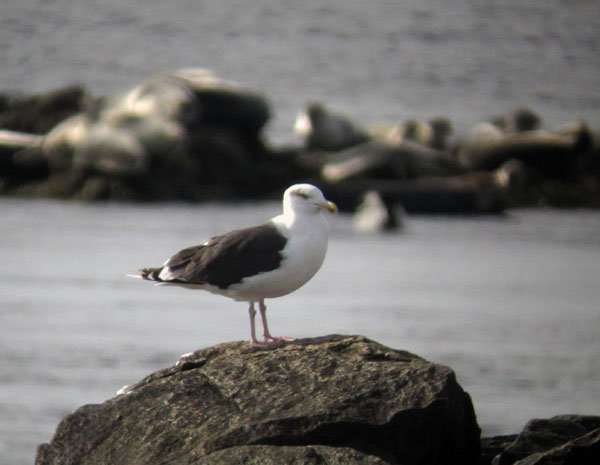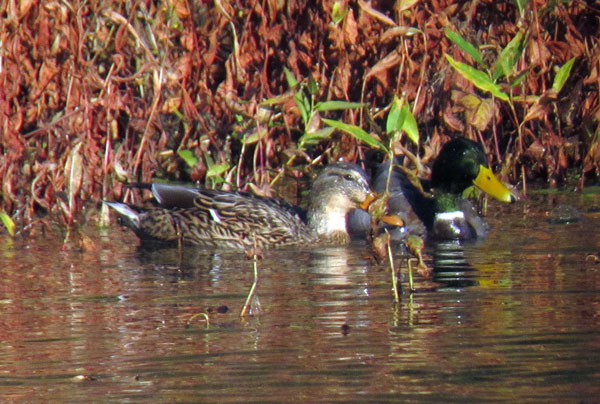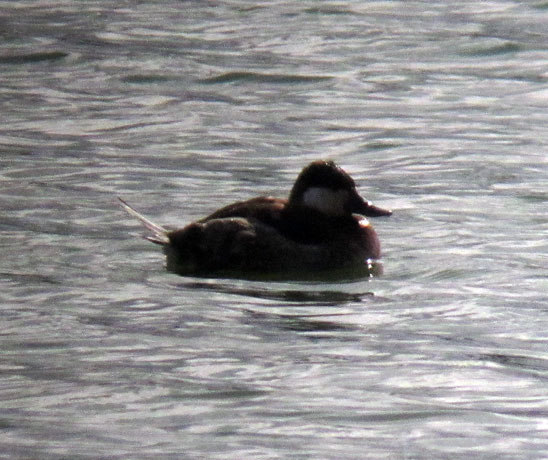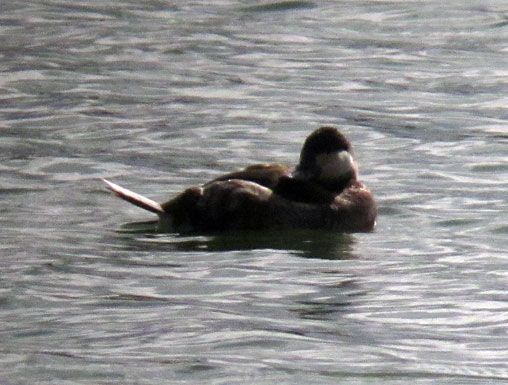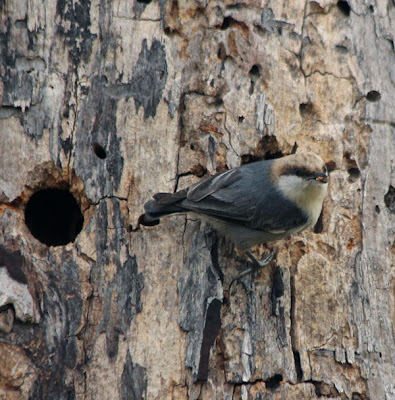In spite of forecast for high winds and some rain, we escaped Hurricane Sandy with just a little wind and showers. And so while we we likely didn’t get any rare birds blown in, we also are much more fortunate than our southern neighbors in New York, New Jersey, and the mid-Atlantic region. The scenes of destruction put things in perspective.
Yesterday in the late morning, I drove down to a doctor’s appointment. I had put the scope and binos in the truck, just in case. As I drove by the Wrightsville Reservoir, just down the road from my house, I saw a couple of specs of white on the water as I raced by. I turned around, drove down to the boat launch, and set up my scope. A Bufflehead and a grebe were across the water, just resting in place. I digiscoped a couple of shots and jumped in the truck to get to the doc in time. Here’s what I saw:
After the appointment, I stopped on my way back. The grebe had moved away from the Bufflehead and was even further off. As I was driving off, two birder friends, both more skilled than I, drove up and we spent some time scoping the bird. It was diving frequently and the light was bad but we settled on a Horned Grebe. One reason is that the Red-necked is quite a lot larger.
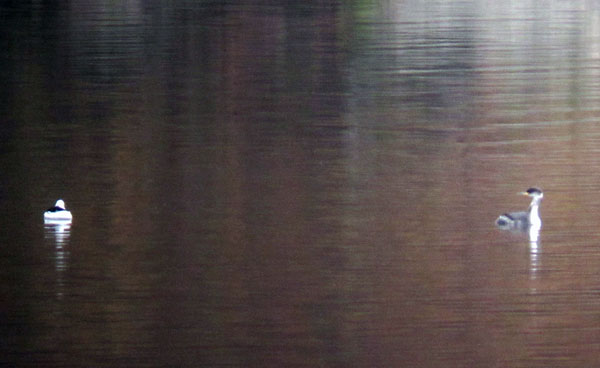
The Bufflehead and the Horned Grebe are nearly the same size so having them side-by-side was a big help.
This is my first Vermont Horned Grebe and thus, first in Washington County. I’m hoping that we might get a few more strays today.
Images by Dick Mansfield
If you enjoyed this post, please consider leaving a comment and subscribing by RSS feed or via email to have future articles delivered to you.

